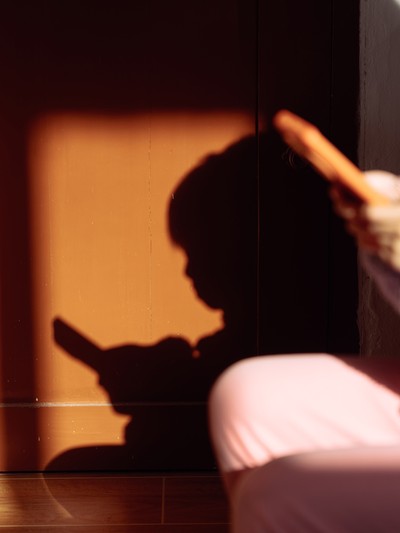

How To Keep Your Children Safe Online
Understand The Risks Before They Do
“The biggest risks include children encountering inappropriate content, disinformation, experiencing cyberbullying, or being targeted by online predators. Additionally, there is the danger of oversharing personal information without understanding the potential consequences. Many platforms are also designed to be highly addictive, which can negatively impact children's mental health and overall wellbeing. Another concern is the significant amount of time children can spend online, often at the expense of building real-world connections and engaging in offline activities. This imbalance can hinder their social development and reduce opportunities for meaningful, face-to-face interactions with family and friends. However, healthy digital habits are possible.” – Leanna Barrett, headteacher & founder of Liberty Woodland School
Start The Conversation Early
“The topic of internet safety should be an ongoing conversation with your child, and one that evolves with them as they grow. It’s never too early to talk about internet safety, and the conversation shouldn’t wait until they’re teenagers. While the focus of the conversation should vary with age, the core message remains constant: staying safe online is essential. Worryingly, 30% of adults globally have never discussed cybersecurity with their children. For younger children, start simple. What are devices? What are passwords? Why does online safety matter? Use examples they can relate to and empower them to ask questions. For older children, delve into how they can protect themselves. This might include recognising phishing scams, avoiding suspicious links and understanding the important of keeping personal information private. Reinforce the fact that cybersecurity is a lifelong skill.” – Anne Cutler, cybersecurity expert at Keeper Security
Stay Informed
“Social media can have a significant impact on young people’s mental health. Brains don’t stop developing until around the age of 26, which can impact rational thinking and makes children more susceptible to the negative influences of the online world. Children need our support at this fragile point of transition in their lives. Young people are growing up in a world which may be unrecognisable to the one you experienced, so it’s important you take the time to educate yourself on the basics. Help your child to understand the images they see online are likely edited or manipulated and not a true representation of reality. This is particularly crucial for young people who are influenced by unrealistic body and beauty ideals. Encourage your child to think before they post, and reflect on what they are sharing and why. Is there a reaction they want to achieve from posting an image? How would they feel if they didn’t get the response they were hoping for? Do they feel comfortable sharing it online but not in person? Be inquisitive about what your young person is doing online.” – Fiona Yassin, family psychotherapist & founder of The Wave Clinic
Set Clear & Consistent Boundaries
“Involve children in the process of setting rules to give them a sense of ownership and understanding. Frame rules around family values and explain why they are important. Use consistent routines, such as being device free at the kitchen table or screen-free hours before school and bedtime, to make these rules part of daily life. Rather than impose them arbitrarily, explain to children why you believe these rules are important, and allow them to come up with fair and reasonable family guidelines.” – Leanna
Build Trust, Not Just Restrictions
“When it comes to monitoring a child’s online activity without breaching their privacy, focus on fostering trust rather than surveillance. Use age-appropriate parental controls to set boundaries, but also regularly talk to your children about their online experiences. Let them know you’re available to help if they encounter anything uncomfortable or confusing. Create a judgment-free zone where children feel heard and supported.” – Leanna
Approach Social Media With Caution
“Keep an eye on platforms like TikTok, Instagram, Snapchat and Discord, which can expose children to interactions with strangers, inappropriate content and potential cyberbullying. Gaming platforms with social features, such as Roblox, also warrant attention due to chat functionality. With all apps and social media platforms you allow your child to access, ensure you conduct your research about controls you can put in place to make them safer (like removing the chat functionality and making a profile private) but ensure you are putting these controls in place with your child. We must ensure children understand the reasons behind and the importance of keeping themselves safe online, so we can trust them to make good, informed decisions when they encounter something they are uncomfortable with.” – Leanna
Teach Children To Spot Red Flags
“Teaching children how to recognise and avoid inappropriate content involves explaining what types of material are harmful, encouraging them to think critically about what they view, and showing them how to use Instagram’s safety features like blocking, reporting and muting. By staying involved and supportive, parents can guide their children to make smarter online choices while promoting a healthy relationship with social media. Teach them to look for red flags – content that promotes violence, hate speech, bullying or explicit material – as well as account authenticity, like fake profiles, which often have minimal followers, generic photos and lots of numbers in their handle name. Teach them to be cautious of strangers or accounts sending unsolicited messages and encourage them to report or block accounts posting offensive material. Explain that accounts won’t be able to see when you block or report them, so it’s nothing to fear.” – Jules Brim, social media expert
Make The Most of Parental Controls
“Built-in parental controls are a great way to keep kids safe online without the hassle of extra apps. Apple’s Screen Time, Google Family Link and Microsoft Family Safety all let you manage screen time, block inappropriate content and monitor activity directly from your device. They’re easy to set up, free to use and perfect for giving kids a safer online experience. If you’re looking for additional software, Qustodio, uMobix and Eyezy all come highly recommended.” – Jules
Set An Example
“Be a role model. Set a positive example for your child by having screen-free time. Put your phone out of sight at mealtimes or in the evening, and be aware of using your phone for long periods or when with family and friends. When you’re in the company of others, you don’t need to ban your child from using social media, but encourage them to connect with their friends and engage in in-person experiences and activities that help young people feel fulfilled and more confident.” – Fiona
Explore Together
“Many parents happily participate in (or tolerate) hours standing on a freezing, wet pitch watching football every week, yet don’t have time for or an interest in their child’s online activities. If your child is spending time online, show an interest and ask open-ended questions about their experiences. Don’t allow their online world to become one you don’t understand. Make it another type of shared experience. Talk about online experiences in the same way you do real-life experiences, and reinforce that children won’t get in trouble for coming to you with concerns. Their safety is your top priority. Online safety isn’t about restriction – but guidance and connection.” – Leanna
DISCLAIMER: We endeavour to always credit the correct original source of every image we use. If you think a credit may be incorrect, please contact us at info@sheerluxe.com.
/https%3A%2F%2Fsheerluxe.com%2Fsites%2Fsheerluxe%2Ffiles%2Fwebsite-images%2F2025%2F04%2Fnew-parenting-background-image.jpg?itok=au3AjSlw)